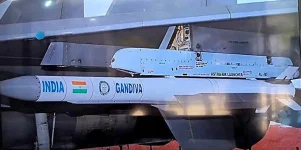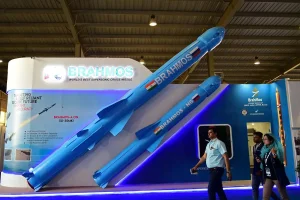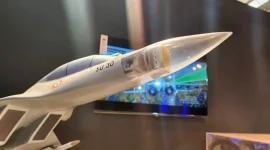- Views: 2K
- Replies: 8
The development of realistic target systems is vital for modern armed forces to effectively test their air defence capabilities and train personnel.
In a significant step towards strengthening this aspect of its defence preparedness, India's leading defence research agency, the Defence Research and Development Organisation (DRDO), has achieved a notable advancement.
The indigenous STAR (Supersonic TARget) Missile has now moved into its third and critical stage of development. This phase focuses on integrating all its complex systems and conducting advanced validation trials, bringing the missile closer to being ready for operational use by the armed forces.
The STAR Missile is specifically engineered to simulate very fast enemy threats that could be encountered from the air, land, or sea.
To ensure its performance, the missile is currently undergoing extensive flight testing to meticulously evaluate its accuracy, reliability, and overall effectiveness. Engineers are in the process of combining the missile's key components—including its propulsion system, guidance mechanisms, and control units—into a full-scale prototype.
This prototype is then subjected to rigorous tests under conditions that mimic real combat scenarios.
With an impressive speed exceeding Mach 2.5 (more than two and a half times the speed of sound), the STAR missile can accurately replicate the flight patterns of modern anti-ship cruise missiles and other standoff weapons, including performing sharp manoeuvres and rapid changes in altitude.
This capability is crucial for defence operators, as it allows them to hone their skills in using advanced tracking and engagement systems, thereby preparing them for high-stakes combat situations.
A key feature of the STAR Missile is its entirely indigenous development. This is distinct from systems like the BrahMos missile, where some technologies, such as its ramjet propulsion, involve international collaboration. A primary objective of the STAR project is to reduce India’s dependence on costly imported defence equipment.
The missile’s modular design offers significant flexibility, allowing for rapid reconfiguration to suit diverse mission profiles and varying geographical terrains, making it a highly versatile tool for the Indian armed forces.
Once fully developed and operational, the STAR missile will enable the military to conduct live interception drills using fast and agile targets. Such realistic training exercises are invaluable for enhancing the effectiveness of air defence strategies and response mechanisms against aerial threats.
The progress achieved by DRDO with the STAR Missile underscores India's growing expertise and self-reliance in advanced missile technology. The organisation has successfully mastered several critical technologies essential for such systems, ranging from precise navigation components like ring-laser gyros to powerful composite rocket motors.
This technological mastery ensures that India's ambitions in developing advanced defence systems are less likely to be hindered by international technology control regimes.
The STAR Missile not only promises to be a cost-effective alternative for training purposes compared to other existing systems but also holds significant potential for broader applications. This includes serving in strike simulation roles to benefit the training programs of all three branches of the Indian military: the Army, Navy, and Air Force.



